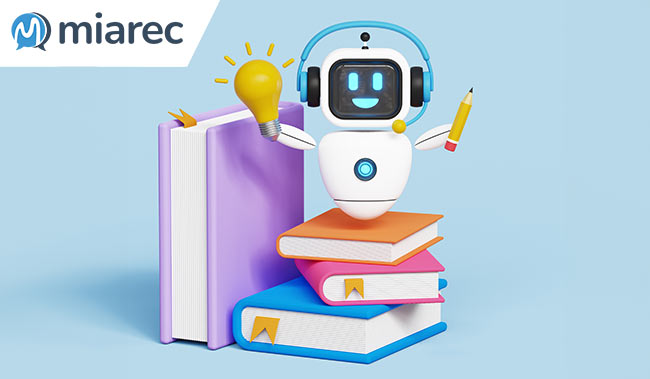11th June 2025

When MiaRec first launched their Auto QA solution, they expected companies to adopt it for one reason: to automate the tedious process of manual call reviews.
And many did. But over time, something unexpected happened. Customers started saying they were getting so much more out of it than just efficiency gains.
They were using Auto QA to understand why customers were really calling. To spot compliance gaps. To detect which agents were quietly struggling. Even to measure the impact of marketing campaigns.
They had built a tool for automation, and discovered we had built a lens into their business. And that realization has changed how they think about their own product, roadmap, and the value they deliver to customers.
Manual QA in contact centres has always been painful. It’s time-consuming, limited in scope, and often subjective. Auto QA was built to solve that: score 100% of calls automatically, surface outliers, and free QA teams to focus on coaching and trends.
And it worked. Companies using Auto QA cut their QA review time by as much as 70%, increased agent coverage dramatically, and saw faster feedback loops. That alone is a big win.
But over time, many of these same companies came back with stories, not about efficiency, but about insight.
What started as a productivity tool quickly became something more strategic. Organizations began asking new questions:
These aren’t QA questions. They’re business questions. And they were being answered not by dashboards or reports, but by conversations.
We’ve seen this again and again:
These aren’t isolated wins. They are examples of the real power of Auto QA when seen not just as a way to automate, but to observe.
This shift mirrors a larger trend: organizations are waking up to the fact that the most valuable business intelligence isn’t in spreadsheets or surveys, it’s in conversations.
Every customer call contains unfiltered, unprompted data: what they care about, what confuses them, what frustrates them, what influences their loyalty. The difference now is that, with AI and Auto QA, we can extract that data, at scale.
It’s not just about tracking CSAT or NPS. It’s about:
Several unique conditions make CX the ideal proving ground for AI-driven business value:
In CX, AI isn’t solving abstract problems – it’s answering urgent, bottom-line questions:
When AI is applied to these questions, the results become not just visible – but transformational.
For the first time in history, operational leaders have access to a tool that gives them direct, scalable, and unfiltered visibility into the business – without needing a team of analysts or months of lagging reports.
Sure, business leaders have always had access to data. But it was often fragmented, delayed, and difficult to connect across departments. Decision-making has long relied on a combination of gut feeling, static KPIs, and partial visibility.
Auto QA changes that.
Now, CX leaders, compliance heads, revenue owners, and even marketing teams can:
This isn’t just a new tool, it’s a new level of control. One that helps leaders stop flying blind and start leading with clarity.
In a world where customers expect more and businesses need to act faster, this kind of insight isn’t just helpful, it’s transformational.
There’s another reason Auto QA is emerging as the first step in a broader business intelligence journey: it’s tangible, ROI-driven, and easy to adopt.
Unlike other conversation intelligence tools that can feel abstract or suffer from “blank canvas syndrome,” Auto QA begins with something every contact centre already has, a manual scorecard.
That’s your foundation. From there, automation simply accelerates what you’re already doing and builds credibility for broader AI adoption.
It’s a rare case where the value is immediate and measurable:
And perhaps most importantly: the learning curve is low. You don’t have to reimagine your processes – you just automate what already exists and then build from there.
Auto QA might be the first step into AI-powered transformation, but it doesn’t have to be the last. Once organizations experience the visibility and intelligence that come from analysing 100% of their customer conversations, the natural next step is to scale those insights across the business.
From Auto QA, many customers expand into Voice of Customer (VoC) intelligence, automatically measuring CSAT, NPS, and Net Effort Score (NES) without surveys. This gives teams continuous feedback across all interactions without adding friction to the customer experience.
From there, it evolves further: combining QA, CX, and operational insights into a true business intelligence platform, where every department can leverage conversation data to improve decision-making.
Auto QA is the gateway. But what it unlocks is an entire ecosystem of AI-driven intelligence, clear, actionable, and transformative.
Reviewed by: Megan Jones